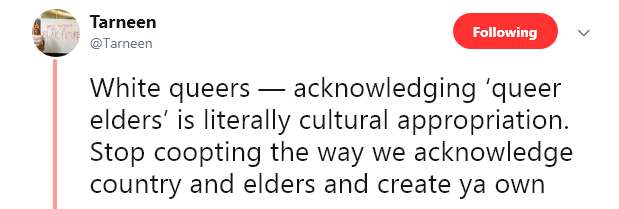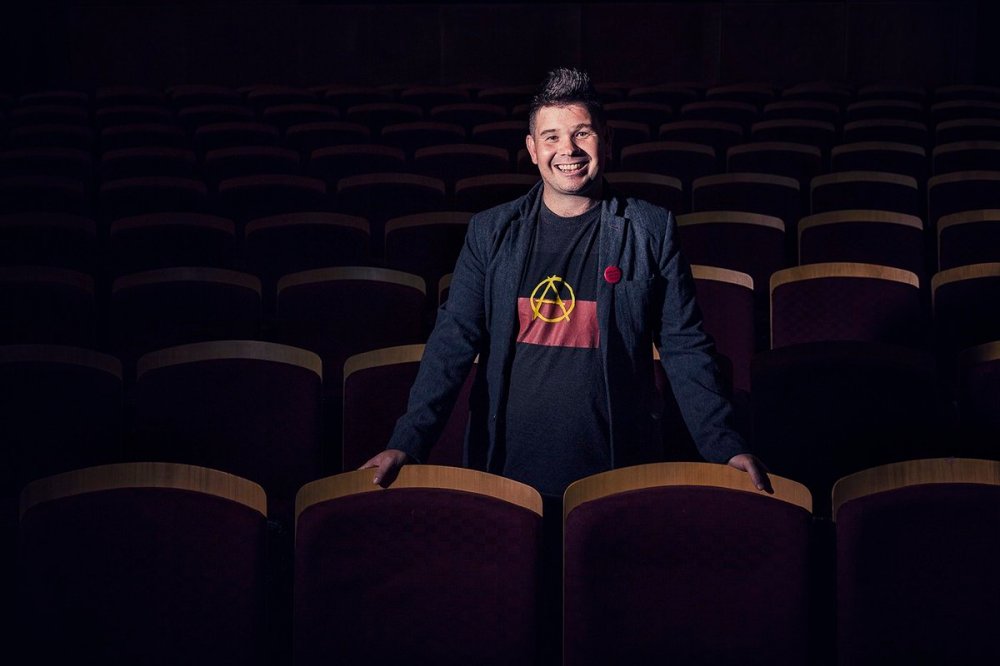This was written in response to the KINQ Manifesto, particularly responding to point 2 and 4 of the Manifesto.
- All museums are sex museums
The KINQ manifesto does something very essential, it discusses heteronormativity in archive, library and museum spaces. As with whiteness, naming, discussing and pointing a finger at heteronormativity is an important part of its disruption and hopefully its eventual abolition. By not being named, by being invisible and by being nowhere and everywhere at the same time heteronormativity and whiteness have long been maintained because if they are not named and discussed, they cannot not be critiqued and challenged. Also, because of their invisibility and the fact that they are so embedded in our colonial social institutions, like archives and museums, heteronormativity and whiteness, along with the power dynamics and oppression associated with them, appear like the natural order of things (Levine-Rasky, 2013, 12). This is how white bodies become seen as just “bodies” while black bodies are seen black or different bodies (Yancy, 2012, 28). This is how the universal person is represented as white, heterosexual and cisgendered. This is how heteronormativity and whiteness become seen as the neutral or default. However, heteronormativity and whiteness are not neutral and neither are museums and we cannot continue to portray them as such. The KINQ Manifesto asks readers to confront and challenge this.
What needs to be added to this discourse is that for many First Nations people, heteronormativity and whiteness are interlinked as they are both an extension of colonization. Colonization, through the construction of different representations created and regurgitated by museums, white explorers, philosophers, anthropologists, and novelists, has stolen our ability to define ourselves and has imposed on us, First Nations people, new identities which have included patriarchal gender norms and sexual identities,essentially, rewriting our histories, our cultures and ourselves. A majority of the West have consumed these representations and that is how they have come to “know” us. Unfortunately, for many First Nations people these false representations have been so forced on us that they are now how some of us have come to know ourselves – through the colonial gaze. Archives and museums have played a large role in this as they have proliferated these representations and the colonization agenda more broadly (Genovese, 2016, 34).
By extension homophobia and colonialism are connected for First Nations people: as Wamba Wamba writer, Steven Lindsey Ross stated “racism and homophobia are just colonial processes”. This has been explored in Enze Han and Joseph O’Mahoney’s book British Colonialism and the Criminalization of Homosexuality: Queens, Crime and Empire which details how homophobia is largely a legacy of British colonialism and how modern states are more likely to currently criminalize homosexuality if they were or are a British colony and how former British colonies far less likely or slower to decriminalize homosexuality. For example, India decriminalized homosexual behaviour in 2018, the discourse around this was India is catching up to the progressive West, but some noted that actually before Western colonization of India, India was openly homosexual which is depicted Indian history and art. Thus, the decriminalization of homosexual was part of the decolonial process
Because of this, I would like to add point 2 of the KINQ Manifesto: All museums are sex museums! that all museums are also race museums and if you don’t think yours is generally it is because your museum is unbelievably white which is invisible to you and you see whiteness as the default. I would also like to add that because heteronormativity, whiteness and colonization are connected, queering these spaces is an inherent component of decolonization work and I believe queering needs to be anti-colonial
- Museums have operated as institutions that have helped define sexual deviancy.
In discussing this, it is important to note that sexual deviancy has long been used as a rationalization by mainstream settler society to police and punish non-white bodies. As distinguished academic, Professor Aileen Moreton-Robinson details in Talkin up to White Women, the black female body has been an icon for sexual deviance which is often used as a justification for the violence inflicted on black female bodies. Similarly, Professor George Yancy discusses how the black male body in America has often been portrayed as inferior, savage and lustful which in turn makes black men something to be feared and to protect white women from. Because of this, there has been a sexual element in many lynchings of black men.
Natural history museums have contributed to this by portraying First Nations people as primitive savages and this has helped justify land dispossession. Part of the portrayal of savagery is sexual deviancy.
What is considered decent or deviant is usually determined by the colonial mainstream and has been imposed on the colonized and still is. For example, writer Celeste Liddle was banned from Facebook for violating community standards by posting a picture of topless Aboriginal women who were performing a public ceremony as part of a protest against the Northern Territory Intervention. This demonstrates how gendered racism weaponizes decency to silence women of colour.
Considering this, we must be mindful of what influences our ideas around what’s decent and what is deviant. What the KINQ Manifesto does well is to throw out decent or deviant binaries and denounces the straight and narrow.
Diversity means disruption – Queering is more than just inclusion
“When we talk about diversity and inclusion, we necessarily position marginalized groups as naturally needing to assimilate into dominant ones, rather than to undermine said structures of domination” – Kyra
I believe diversity initiatives from libraries, archives and museums are a concession and an acknowledgment that things need to change. Nevertheless we cannot have change or have meaningful diversity without disruption. Inclusion of people of colour and people of all sexual orientations and gender identities does not mean anything if you expect the organisations that historically excluded them to remain the same. The issue many people of colour and people of all sexual orientations and gender identities face when they enter organisations like museums is they are asked to basically be surrogate white, middle class, straight and cis people. We are often asked to put our politics aside to enter these spaces whereas we can’t because our existence is political. To change institutional oppression, we need to change the institutions.
The KINQ manifesto acknowledges this. I believe queering doesn’t just mean the inclusion of queer people and ideas to the existing operations of archives, libraries and museums but for those operations to change at a fundamental level and for some complete abolition.
Queering needs to be anti-colonial

The tweet above from Tarneen Onus-Williams displays how Western Queer cultures can sometimes enact or assist white supremacy. Another example, discussed by Mitch Hibbens is how many people write in their Grindr profiles “Aussie only” (code for “whites only”).
The KINQ Manifesto calls for intersectionality which I think is important. If we are not all free, none of us are free, as the old saying goes. I truly believe when I discuss decolonization, that decolonizing means queering, means smashing the patriarchy and abolishing capitalism. When you believe your organization needs queering ensure your discourses and actions are intersectional. We should destroy existing power dynamics rather than play into them.

Nathan “Mudyi” Sentance is a Wiradjuri man who grew up on Darkinjung Country, NSW. Nathan works to ensure that First Nations stories being told cultural and memory institutions, such galleries, libraries, archives and museums are being told and controlled by First Nations people. He tweets at @saywhatnathan and blogs at https://archivaldecolonist.com/
Great blog post, Nathan! I like how you explore the parallels between heteronormativity and colonisation, looking at how the two intersect. A very informative and thought-provoking piece.
LikeLiked by 2 people
Thank you for your comment – we will pass it on to Nathan for you.
LikeLike
Reblogged this on Archival Decolonist [-o-].
LikeLike
Black text on a vibrant pink background is painful to read. I know why you chose that colour and that’s understandable but it is not pleasant to read text on this colour. There’s a reason most websites change black text / white background or vice versa – it’s much easier to read.
If you want to keep some colour, please go with a light pink background if anything, please.
LikeLiked by 1 person
Thanks for your great feedback – we have taken your advice and lightened the pink. Best, Craig & Nikki.
LikeLiked by 1 person